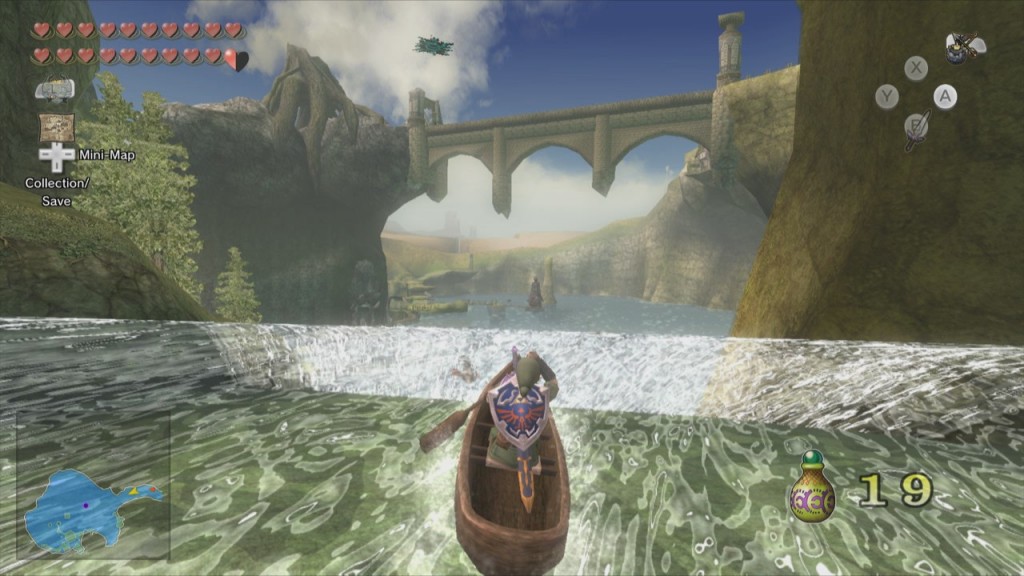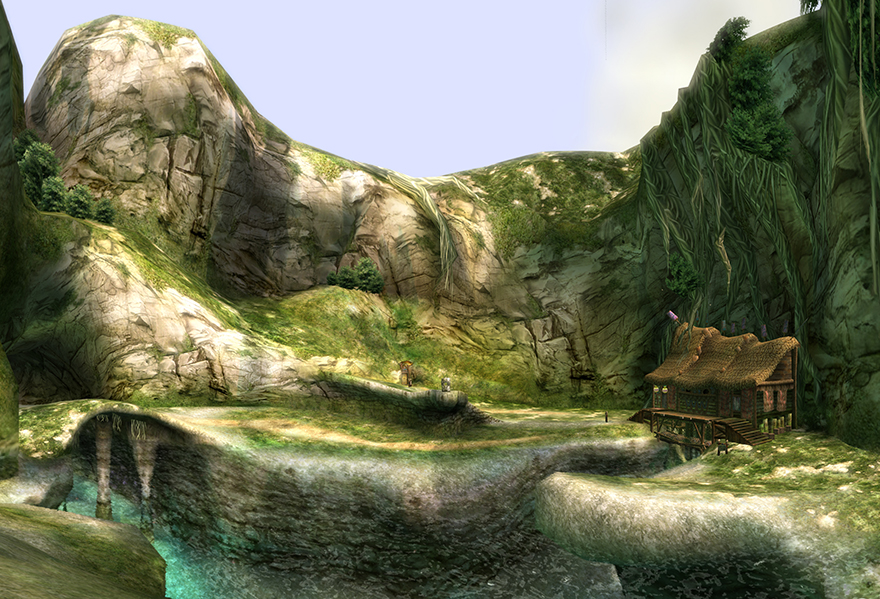When you think of outdoor educators, someone like Z (name changed to protect privacy) probably comes to mind: grey hair in braids, wearing a wool sweater with jeans and mukluks, she uses her university email account with reluctance and sees devices as a harbinger of the end-times. Her pedagogy born out of her environmental activism in the 70s, Z will talk your ear off about “indoor kids” and the “wired generation,” and how the only solution to the oncoming apocalypse is taking technology out of kids’ hands.
She’s also curious about The Legend of Zelda: Twilight Princess (2006). I’d applied to her program stream as part of my teachers’ college degree on a whim. Part of the application package asked for a personal artefact expressing our teaching philosophy in a way that a resume couldn’t. I’d submitted—in hindsight perhaps a little too boldly—a cross-stitch I’d made of the opening scene of the battle with Red in Pokémon Crystal (2001); she later confessed that she’d taken me into the program based on that artefact. Z can knit a pair of socks out of tumbleweeds and make a delicious stew out of meat she’s hunted herself, but figuring out how to articulate the moment where the “natural” and the “virtual” collide escapes her.

Z will be speaking at a symposium on canoeing where, for the last few years, the organizers have noticed a decline in younger attendees; there’s a certain staleness to the air, and there are only so many times one can bemoan kids these days. Something fresh needs to find its way into the program. Z asks me if I’ve ever played a videogame in which a character goes canoeing.
And so we find ourselves, some weeks later, setting up my Nintendo Wii in an empty classroom, and I’m booting up Twilight Princess.
///
Richard Louv’s book Last Child in the Wilderness (2005) has left its mark all over the outdoor and experiential education field. With urgency and excitement in his tone, Louv describes the causes and effects of “Nature-Deficit Disorder”, linking a lack of nature in our childrens’ lives to everything from obesity to depression. Physical and emotional development in young folks, he argues, depend on their direct and ongoing interaction with green places. Devices are the enemy; videogames are mindlessly addictive wastes of time at best, and recruitment tools of corporate entities at worst.
Certainly, there’s good to be had in the outdoors: silence, a space for reflection, the feeling of dirt between your toes. I’ve taken kids on canoe trips and marvelled at how different they are after two or three days—life’s hectic enough as it is, and sometimes slowing down and appreciating what you have is all you need to re-energize. I wonder, though, what exactly “nature” entails, what “slowing down” means, what “disconnecting” can look like.
Right up there with my precious memories of watching a pill bug unfurl or starting a campfire with nothing but a match and some hope, are memories of seeing greenness and life return to Shinshu Field in Ōkami (2006), or finding hidden treasures in the underground jungle in Terraria (2011). I’ve spent hours paddling in canoes and hours sailing in the King of Red Lions in The Legend of Zelda: The Wind Waker (2003). I’ve climbed snowy mountains in Quebec and in Minecraft (2011), with joy and urgency in both.

///
Z holds the Wii Remote gingerly, distracted by Navi, who appears on screen to denote where the controller is pointed. I’d forgotten about that; somehow, over the course of the hours I’d put into the game, I’d deleted her from my visual lexicon. To me, she was nothing more than a cursor. To Z, she was a character that was a part of her experience.
I’ve brought a copy saved just outside the fishing hole.
“Does it get cold up there in the winter?” Z asks.
“No, but Snowpeak is just to the north—look there, on the minimap.”
“What’s a minimap?”
“Well, it’s like—imagine if you were on an expedition, and the map was always in the lower right-hand corner of your field of vision…”
We discuss, as she orients herself, augmented reality and the virtues of north-up versus track-up maps.
After some time attempting to figure out how to control Link (“the elf boy”) she finally enters the door in front of her. Locating the A button takes work; her hands aren’t used to the geography of a two-part controller—it may as well be 2006 again, when I loaded up Wii Sports for the first time to work out the Wii’s many parts for myself. I sigh, softly; it’s spring in the fishing hole, a soft breeze carrying flower petals into the lake. My eye catches the heart piece I’d somehow missed in this playthrough, more interested in the graphics in the background, and all the trees she can’t climb.
///
In 2013, I had the opportunity to attend the first annual Canadian Student Outdoor Education Conference, a coming-together of rugged adventuresome folks, environmental activists, gym teachers and camp directors. Z suggested I attend to get a feel for what it would be like speaking at it in years to come.
I discovered that nothing fires up a tired crowd quite like asking a room full of people in hiking boots what they think about gaming. I ended up in a long and thoughtful debate with a retired tactical helicopter pilot now working towards her M.Ed in education—specifically, studying how children develop spatial orientation and cognitive mapping—whose career spanned the introduction of real-time mapping technologies, such as GPS. She wondered if we were entering some kind of brave new world where people would learn to trust Google Maps more than their own knowledge and instinct to get from Point A to Point B, if there wasn’t some way we could teach kids to really learn how to navigate a space by memory.
I had that conversation in mind a year later when 90,000 people—furiously typing away in a Twitch stream now immortalized in iconography and mythology any anthropologist would be proud of—perfectly and simultaneously recalled how to get from Pallet Town to the final showdown at the end of the Indigo Plateau.
///
We paddle around in near-silence for a while. Z tries, unsuccessfully, to canoe up a waterfall. She’s incensed that if you jump out of the canoe you’re not allowed back in. She’s also discovered that she genuinely enjoys fishing and the motion of turning the nunchuck. I point out the heart piece and turn up the contrast on the TV screen so she can see the bottle hidden by the walkway. She feels that Link could learn a thing or two from a professional about sterning a canoe. (“Maybe Hana is letting him figure it out on his own,” she wonders. I wonder about fanfiction and character agency.) She asks if there’s any canoeing other than the fishing hole and I take her to Iza’s Rapid Ride, which is a little beyond her skill level. She tells me about swift-water kayaking as I navigate the river, and when I get to the bottom, she asks to see it again.

Later I call Epona in Hyrule Field so that Z can try sharpshooting on horseback. She’s interested in the human-wolf transformation and wonders about its relationship to several religious canons, and is genuinely delighted that Link can speak to Epona as a fellow animal. She notices things I hadn’t: the texture of the grass, the movement of Navi on screen, the way the wind pulls at Link’s hat. I teach her the difference between horse grass and hawk grass and show her where they grow. She gets excited about plant identification as a gameplay element and wonders if there’s a field guide to the game—I direct her to the plethora of wikis.
In the end we must have been in that room together for four hours, playing Twilight Princess like my brother and I played The Legend of Zelda (1987) when I was six: noticing things, missing things, trying and failing and trying again, pointing things out to each other, sharing information, testing items and skills to see if they work as intended. I had a better sense of where things were and how to defeat certain enemies, but for Z it was all about that moment of joy in trying something for the first time.
When I guide trips or run an outdoor education lesson I try to instil that same sense of curiosity and wonder in my students.
///
In his book, Louv talks a lot about “wonder,” that elusive sense of surprise and admiration at the new or unexpected. Wonder can lead to a sense of belonging, and community built around shared experiences of discovering how we fit in with those around us. He writes with concern about a generation being raised without that sense of connectedness, without the joys of play, the emotional extremes of loss and longing and delight. I wonder if he just isn’t considering all his options; maybe, despite all our big talk about being open-minded, outdoorsy people are cutting ourselves off from entire worlds of possibility.
An attendee at the outdoor education conference, furiously defending Louv against my blasphemy, suggests that videogames are the wrong kind of play because they’re “not real”. I ask her what ‘real’ is. She’s silent for a while. “Real is anything you can feel,” she offers. “Real is anything that makes you feel something.”
It’s common for people in my field to talk about “real” in this way, as though it’s a place you can go to: a mountain or a forest or a river. But, for four whole hours, “real”, for Z, was in Hyrule.
Images via Zelda Wikia
